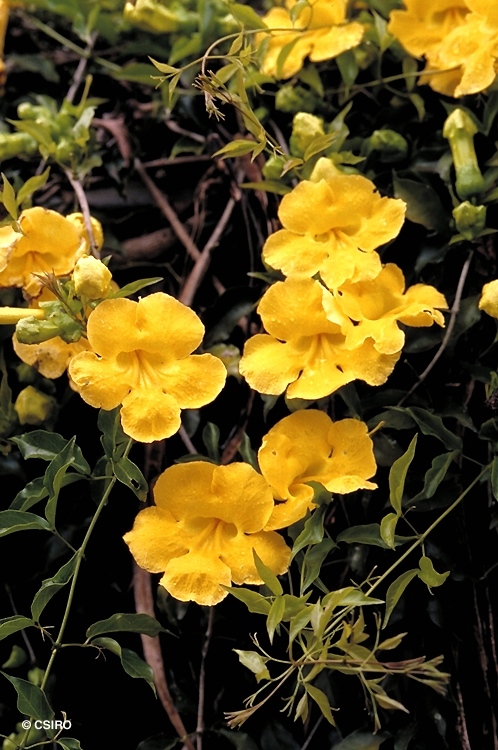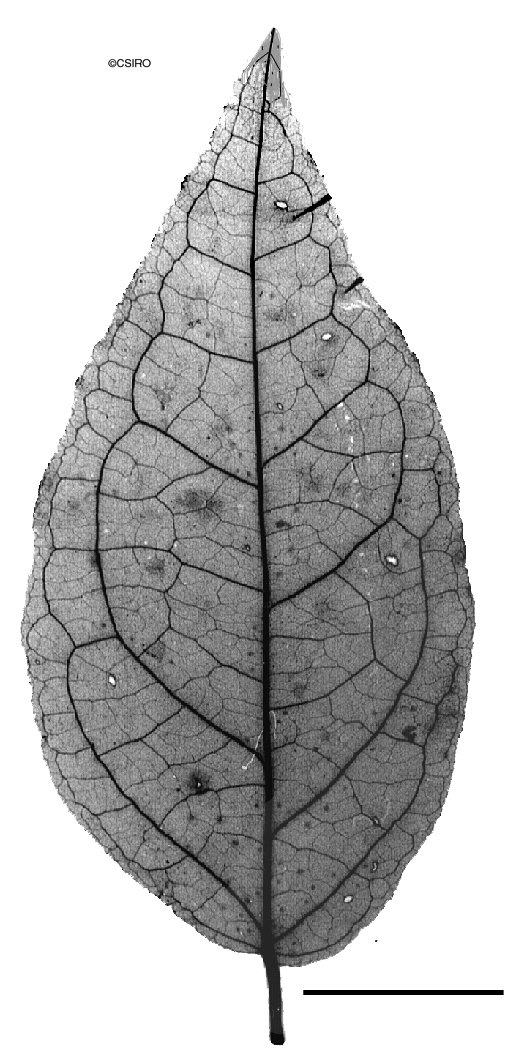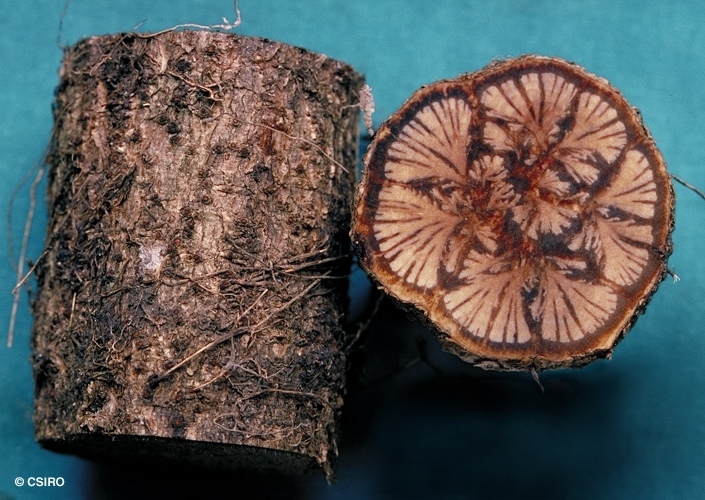Australian Tropical Rainforest Plants - Online edition
Macfadyena unguis-cati (L.) A.H.Gentry





Gentry, A.H. (1973) Brittonia 25: 236.
Cat's Claw Creeper
Stems cling to trees and other substances by means of numerous adventitious roots. Vine stem diameters to 7 cm recorded.
Compound leaves consist of 2 leaflets and the compound leaf axis ends in 3 tendrils. Leaflet blades about 3-6.5 x 1.2-3.5 cm, leaflet stalks about 1.5-7 mm long. Numerous dark flat glands present on the underside of the leaflet blades particularly near the midrib. Stems climb by means of both tendrils and adventitious roots. Tendrils 3-branched, each branch resembling a cat's claw. Tendrils produced between the pair of leaflets.
Calyx about 1-2 cm long. Corolla about 8-9 mm long. Stamens dimorphic, 2 long and 2 short and 1 staminode. Long stamens with filaments about 3 cm long. Short stamens with filaments about 1.8 cm long. Filaments hairy towards the base. Staminode about 0.5-0.7 cm long. Anther locules divaricate, attached to one anther only at the base. Anthers about 0.8-1 mm along their longer axis. Pollen grains cream to white. Ovary about 0.6 cm long. Style + stigma about 3 cm long.
Fruits pendulous, slender, flattened, about 25-47 x 1-2 cm. Seeds very numerous, winged. Seed + wing about 25-40 x 9-12 mm, wings about 10-15 mm long. Cotyledons broad and flat, wider than long, about 6 x 9-11 mm. Radicle about 1 mm long, much shorter and narrower than the cotyledons.
First leaves ovate to orbicular, apex obtuse to apiculate, base obtuse, margins sparsely and obscurely toothed with 1 or 2 teeth on each side. Lateral veins forming loops inside the blade margin. Taproot swollen, carrot-like. At the tenth leaf stage: leaf blade lanceolate, elliptic to ovate, apex acute, mucronate, base rounded to almost cordate, margin sparsely toothed with 1-3 teeth on each side. Several flat pale glands visible on the underside of the leaf blade particularly towards the base. Midrib raised in a depression on the upper surface, lateral veins forming loops well inside the blade margin. Most seedling parts clothed in very short hairs which are scarcely visible even with a lens. Taproot thickened like a carrot (Daucus carota), about 1.5-2 x 1 cm. The leaves produced after the tenth leaf are often compound and bifoliolate with the rhachis ending in a three-branched tendril. Seed germination time 32 days.
An introduced species originally from central and South America (Mexico to Brazil and northern Argentina). naturalised in NEQ and southwards as far as north-eastern New South Wales. Altitudinal range in NEQ from near sea level to 900 metres.
This species can become a troublesome weed in some areas. It grows vigorously, flowers and fruits producing numerous wind-dispersed seeds.





